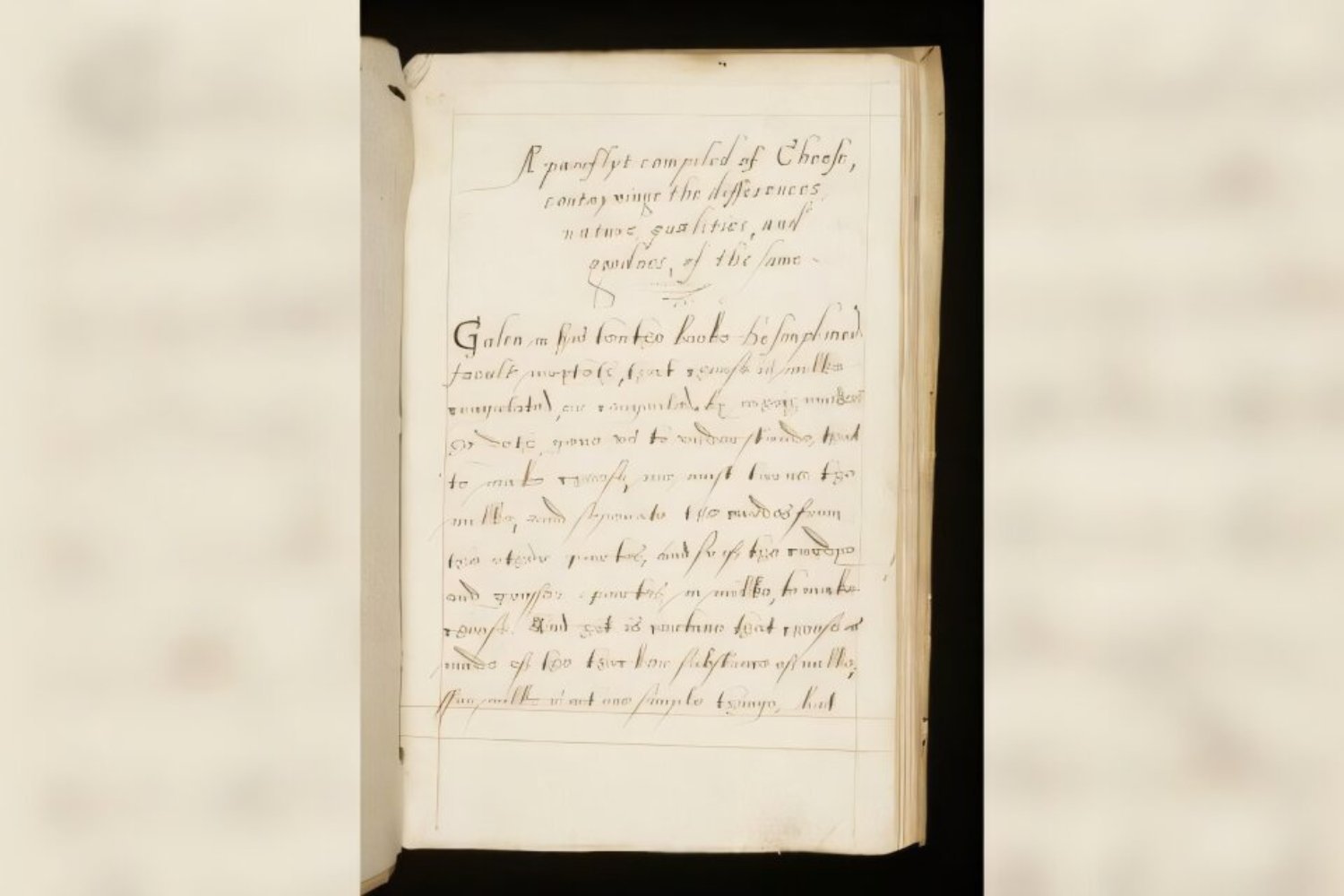
A Slice of History: Unearthing the Oldest English Book About Cheese
Cheese, a culinary delight enjoyed in countless forms around the globe, boasts a rich and intricate history. And now, a newly transcribed manuscript, dating back to the late 16th century, provides a fascinating glimpse into the English appreciation for cheese over four centuries ago. Titled A pamflyt compiled of Cheese, contayninge the differences, nature, qualities, and goodnes, of the same, this previously unpublished book is believed to be the oldest known English treatise dedicated solely to the study of cheese.
The existence of this 112-page vellum-bound manuscript, acquired by the University of Leeds at auction in 2023, remained largely unknown until recently. Its pages reveal a wealth of information, offering insights into the diverse varieties of cheese available in the late 1500s, along with considerations for their dietary properties and consumption practices. While the author’s identity remains a mystery, the book was clearly treasured by its former owners, who included prominent figures such as members of parliament and a royal physician.
Food historian Peter Brears, upon examining the manuscript, hailed it as a groundbreaking work. In a statement released by the University of Leeds, Brears remarked that it is "probably the first comprehensive academic study of a single foodstuff to be written in the English language." This assessment highlights the unique and significant nature of the document, underscoring its contribution to our understanding of food culture and scholarship in early modern England.
The Pamflyt demonstrates that people of the 16th century were not only enjoying a range of cheeses, but also actively considering and studying their characteristics from a nutritional perspective. The text delves into the suitability of milk from various animals for cheesemaking, including camels, donkeys, and horses. Interestingly, it cautions against using dog’s milk, suggesting that it could induce premature labor in pregnant women. The author also acknowledges the absence of cheesemaking practices utilizing human milk, indicating a certain level of awareness and social commentary on the subject.
Although the term "dairy intolerance" was likely not in use during the 16th century, the manuscript suggests that people were nonetheless familiar with the concept that some individuals did not tolerate cheese well. Alex Bamji, an associate professor of early modern history at the University of Leeds, points out that the text contains passages that address the importance of considering one’s body type and the properties of the cheese before consumption. This reflects a nuanced understanding of individual sensitivities and the potential impact of cheese on digestion.
A specific passage quoted from the manuscript states: "He that will judge whether cheese be a convenyent foode for him, must consider the nature of the body, and the temperamente of the cheese and both considered he shalbe hable to judge whether he is like to take harme be cheese or not." This demonstrates a proactive approach to food consumption, emphasizing the need for careful consideration and self-awareness in relation to dietary choices.
Furthermore, the Pamflyt explores the optimal timing for cheese consumption. The prevailing belief, according to Bamji, was that cheese was best consumed towards the end of a meal. This practice aligns with the modern custom of serving cheese as a final course, often accompanied by fruit or wine. The manuscript provides a rationale for this practice, suggesting that "Cheese doth presse downe the meate to the botome of the stomake," thereby facilitating digestion. The text also considers the implications of consuming cheese on religious fasting days, adding another layer of complexity to its exploration of the subject.
Beyond dietary considerations, the Pamflyt also contains practical advice and techniques related to cheesemaking. One section proposes using fish guts to curdle milk, a method that may seem unconventional today but reflects the resourcefulness and experimental nature of early cheesemaking practices. The manuscript also describes a technique for producing hard cheese that remains in use even in modern cheesemaking.
The rediscovery of the Pamflyt has also allowed scholars to trace the ownership of the book through history. Three previous owners have been identified, including a physician who served Queen Elizabeth I, a member of parliament who requested the book’s return after it had been "perused," and a member of another prominent parliamentary family. These connections highlight the significance and value attributed to the manuscript by individuals of high standing in society.
The identity of the author, however, remains an enigma. Peter Brears suggests that there are several potential candidates and hopes that further research, perhaps in the form of a doctoral dissertation, will shed light on the author’s identity. Brears points to potential clues such as handwriting style, regional dialects, and references to specific locations within the text. These avenues of investigation could potentially lead to a more definitive identification of the author and provide further context for understanding the manuscript.
The Pamflyt stands as a testament to the enduring fascination with cheese and its place in English culture. Its rediscovery offers a unique opportunity to delve into the culinary practices, dietary beliefs, and intellectual pursuits of the late 16th century. As scholars continue to study and analyze this remarkable document, more insights are sure to emerge, further enriching our understanding of the history of cheese and its significance in shaping the tastes and traditions of the past. The unveiling of this 16th-century manuscript is truly a grate piece of dairy history.
